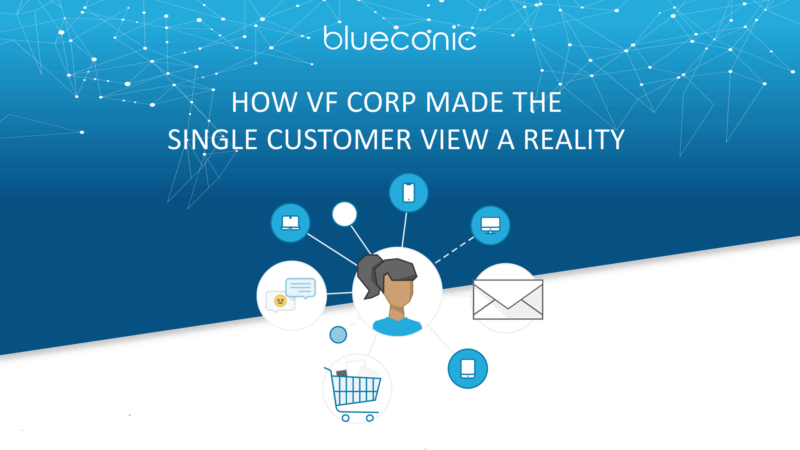
There’s no silver bullet and it requires a solid foundation of people, process and technology to realize the much-sought-after single customer view. But it’s not out of the realm of possibility. Those are three key takeaways from a recent session at the MarTech conference featuring Reem Seghairoun of multi-brand apparel company VF Corp and Cory Munchbach of Customer Data Platform BlueConic.
In this session, Munchbach asked Seghairoun how VF Corp, the parent of brands like Timberland, Vans and Smartwool, began looking for a Customer Data Platform. (Spoiler alert: It ended up choosing to partner with BlueConic.)
Where to start
“About a year and a half almost two years ago now, we pursued a journey in search of a technology that aligned with our customer-centricity objectives, and ultimately selected a CDP,” said Seghairoun, adding that VF began with its use cases rather than with a specific technology in mind. “And the journey has been going on since.”
Seghairounnoted that any company that isn’t 100% digital and starting from scratch will have the challenge of dealing with its existing data infrastructure.
“We had pieces of the puzzle in place. So we started by looking at the gaps and what we wanted to implement in the future,” she said. Specifically, VF was looking for a technology that supported sophisticated customer analytics and addressed consumer privacy concerns. It sought a solution that was easy to use that meshed with the company culture. VF considered building versus buying, while always keeping customer-centricity front and center.
Because VF operates multiple brands and has e-commerce operations as well as retail stores, Seghairoun said it was especially important that a CDP solution allowed for the kind of seamless integration that the company strives to provide its customers.
“BlueConic’s CDP has the ability to integrate customer data from stores as well as online channels; it has a lot of the readily-available and pre-built APIs that allow us to connect to the different channels that come and go over time,” she said, noting that integration with customer service was also important for VF.
A very deliberate rollout
Munchbach described VF’s very deliberate approach when rolling out the CDP technology within the company, beginning with a single brand and then expanding to more and continuing to build out the use of the platform.
“We did look at our brands and selected one that seemed to have fresh problems,” said Seghairoun. “So we had the low-hanging fruit, if you will. We wanted to get in there and support the brand while giving a CDP a try,” since it was the first time such a platform was brought into the company.
“That’s why we selected doing one brand at the beginning,” she continued. “But also it allowed us to… get people familiar with the tool and also get the technology team familiar with it and see if implementation can go really well before we scale. Generally speaking, we like to approach newer technologies in this manner.”
Over time, VF has learned a lot about how internal teams leverage data from a CDP and the best way to staff new implementations.
“Taking care of the data front — understanding what type of data you want to bring in, how you want to bring it in — strategizing that work ahead of time, can buy a lot of time when it comes down to the CDP implementation,” said Seghairoun. “The other thing that we learned is just really bringing your users along the journey from the very beginning, can pay off a lot. As we did the implementation, we started learning more and more, and I think we’ve become better at figuring out the type of roles that are useful to have in every implementation.”
How to measure success
Munchbach also spoke about how VF measured the success of the technology adoption. “One of the things that I was struck by from the Timberland team during their implementation,” she said, “was how thoughtful they were about the way they were measuring the impact of this addition to their tech stack.” They thought about cost-efficiencies, workflow efficiencies and their ability to provide the better customer journey that they sought.
Seghairoun shared a little more about the company’s approach, saying: “When we’re measuring how well a product implementation goes for us, we kind of look at three things — one, of course, efficiencies. Does it really do a better job at lowering costs internally? Then the second, but the most important one is, does it align with our consumer-centricity objectives? Does it allow us to have that great relationship and provide the experience we would like to provide our consumers? Monetization comes naturally, I think, as the third part, and organically, if you do well with the first two.”

